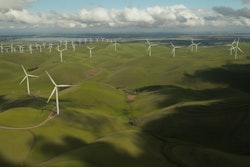
Last year highlighted just how vulnerable our food supply can be. The Coronavirus disease (COVID-19) exposed weaknesses in the complex logistics system of food distribution. Grocery store produce shelves stood empty as crops rotted in the field. At the same time, we saw an overwhelming increase in demand at food banks in urban centers. To meet the dietary needs of everyone in the world, we need to grow three times more food with no additional land or water. That will require an agricultural revolution, and indoor vertical farming is a key part of the solution.
The pandemic shows no signs of slowing, even with the prospect of a global vaccine rollout on the horizon. The conditions created by it will continue to shape how we choose, consume and make food. But, what does that mean in practice? In short, local supply chains, less labor-intensive methods of production and a more discerning consumer base.
Here’s some predictions for the ag business for 2021.
More conscientious food consumers following the pandemic
COVID-19 opened our eyes to the impact of comorbidities on our health, many of which are a result of diet, including Type 2 diabetes, hypertension and heart disease. As individuals recognize the correlation between poor diet and health, especially the elevated risks for COVID-19 complications, we will see a greater interest in consuming fresh fruits and vegetables. Rather than healthy eating to look good, people will focus on using nutrition to strengthen our immune systems.
The food supply chain will become more localized
The global supply chain for food and consumable goods was massively disrupted following the pandemic, a first-time experience for most consumers. While the biggest impact was felt immediately upon lockdown, issues remained all year, exacerbated by pathogen outbreaks and lettuce recalls. Consumers were frustrated by the lack of availability of items they were used to getting with ease. These disruptions were a wake-up call for consumer goods companies, as the lean manufacturing and lean supply chain principles that dominated the last few decades faltered when stressed. Added threats from natural disasters, like the wildfires in California, made us examine our reliance on a global system that transports food thousands of miles.
In 2021, we’ll see food and other consumable goods move toward a local manufacturing and distribution model. Retailers will prioritize locally grown foods to mitigate supply chain risks.
Threats will increase for traditional agriculture, spurring a change
Traditional agriculture is under pressure from climate change, labor shortages and an ever-increasing demand for more food even as we run out of land and water. Agriculture, by nature, cannot move quickly to address rapid market changes. The field remains critical and needs to continue producing food at maximum capacity. However, the field alone cannot feed the growing world population.
2021 will bring continued innovation in agtech, with the goal of taking pressure off the field by finding new ways to grow and distribute fresh foods. To stay profitable, the field will move toward more heavily commoditized crops such as corn, rice and soybeans and let market disruptors - such as vertical and indoor farming - focus on horticultural crops including fruits, vegetables and flowers.
Vertical farming will move into the mainstream
Vertical farming, long touted as too expensive, will become a key component of the food supply chain, which will bring down the cost curve. Investment into agtech has reached record highs, totaling $2.2 billion in the first two quarters of 2020 alone, up from $2.7 billion for the whole of 2019. We expect those numbers to continue to climb in 2021.
As technologies such as LEDs and computing power get cheaper and more efficient, indoor farming will produce significantly higher yields. In addition, indoor farms will introduce new crops beyond leafy greens as the costs of production decrease. Over time, indoor farming will bring back food varieties we haven’t seen in decades. Indoor farming’s ability to control climate, pathogens and weather will allow it to produce more consistent and flavorful crops. For these reasons, we’ll continue to see strong growth in the indoor farming industry.
The use of AI will be more prolific across the agriculture industry
Artificial intelligence (AI) in farming will expand in 2021 to improve crop quality and yield. Driven by advancements from tech-first farms, AI and robotics will become indispensable in the new age of agriculture. AI can dictate and control heat, light and water, continually optimizing plant science.
Click here to hear more about the use of artificial intelligence in the supply chain:
2021 will bring with it the emergence of retail agriculture
Retailers are beginning to realize the value of indoor farming, particularly as it de-risks the volatile supply chain and allows stores to increase their green digital footprint. Improved shelf life, taste and pesticide-free growing practices will drive consumer demand for produce grown in controlled environments. This year, we’ll see vertical farms installed inside grocery stores where consumers can pick their own greens.




















